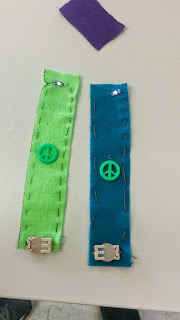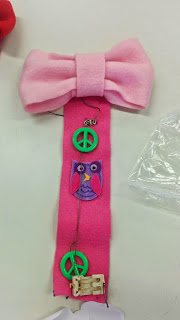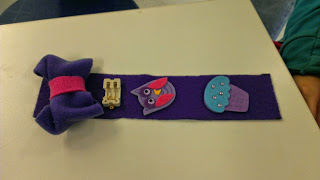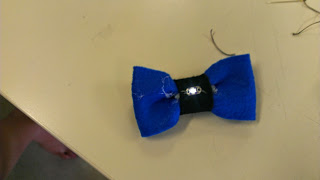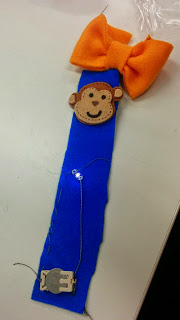This past Friday, we hosted a hands-on exploratory workshop at Clifty Creek Elementary School’s STEM Fair in Columbus, IN. Given the drop-in and walk-by atmosphere of a fair, we wanted to offer a project that is easy to create but at the same time offers all of the circuitry learning benefits of the electronic textiles toolkit. We offered one of the many e-textiles activities documented in our colleague Leah Buechley’s book Sew Electric, the light-up bookmark, and another project we made up on the fly while preparing for the workshop, a light-up bow. However, much of the preparation was done in coordination with the Clifty Creek Elementary School teachers, who also provided materials for the workshop, including electronic components and crafting supplies.E-textiles are electronics embedded into clothing, accessories, or other wearables. In the Creativity Labs, we like to use the LilyPad Arduino toolkit, which includes sewable LEDs, battery holders, and microcontrollers that can all be connected with conductive thread. This provides opportunities to combine both high- and low-tech, both crafting and electronics, and represents an unusual and very powerful approach to learning circuitry and programming that tends to be more inviting to girls. The Creativity Labs is always happy to share e-textile workshops with our partners!
The Clifty Creek STEM Fair was an informal after-school field day, kind of like an open house, for families and people of all ages to enjoy the pre-Memorial Day Friday. Throughout the fair, barbecue grills, face painting, and moonbounces gave the festival a true Mini Maker Faire vibe, that was sprinkled with science explorations at every corner of the schoolyard and house. The focus of the Fair was many science-themed activities, such as our e-textiles workshop.
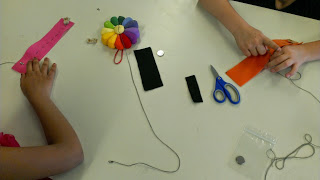 |
| E-sewers hard at work! |
Our workshop was set up in Ms. Lucas’s 3rd-grade classroom. To create light-up bookmarks, we provided various materials to the visitors of our table. These included fabric strips, felt stickers, bows, conductive thread, sewable LEDs, sewable battery holders, and batteries. Many children gathered at various tables with their parents and embarked on highly imaginative creations, which included various patterns with stripes, hearts, and happy animals. The children were captivated by the lights sewn into the fabric, but naturally, many lacked experience with sewing and needed assistance from adults. Thus, parents were highly involved; while children focused on the imagination, decoration, and connectivity of the circuits, any parents who were present primarily helped with the stitching and knot-tying.
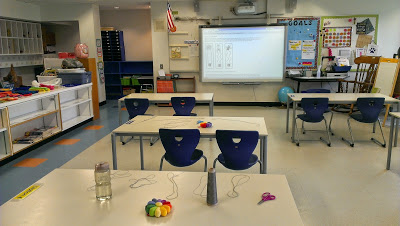 |
| The classroom setup |
Given this great start to the Creativity Labs' summer service activities, we are excited about the other upcoming opportunities to interact and share our learning with the local community in and around Bloomington, IN, and, in fact, throughout the country. Here is a list of some of the events we are looking forward to:


